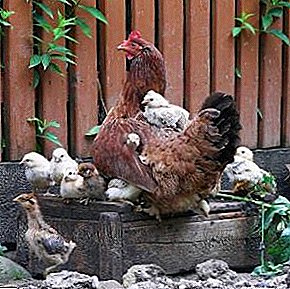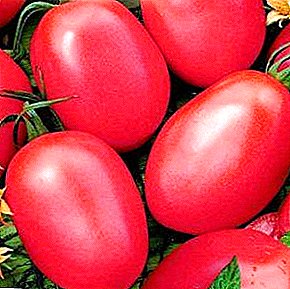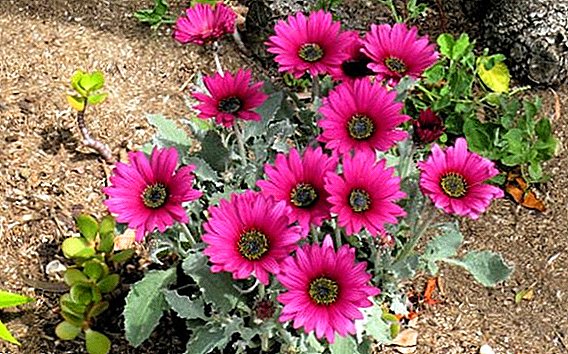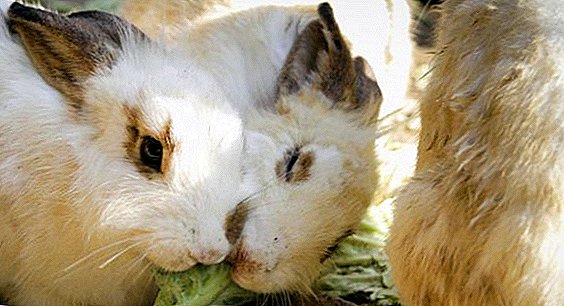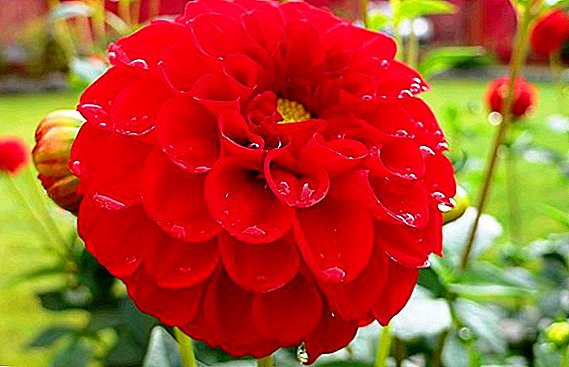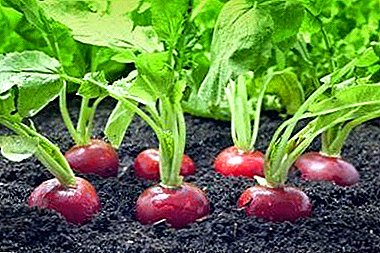
Radish is considered one of the earliest vegetable crops. Usually by the end of May you can already harvest the first harvest. But these terms imply a landing in open ground.
But if you plant a radish under the film, the harvest can be expected even earlier. The article will tell you when it is better to plant radishes and how to grow them.
Today we will discuss the pros and cons of growing radish under the film, the differences of this method from others, as well as when and at what temperature you can begin to sow seeds.
Features of this method of growing
Planting these root crops under the film has a number of nuances that are worth mentioning:
- it is advisable to choose early ripening varieties;
- you need to take care of additional lighting, but at the same time ensure that the vegetables do not overheat;
- Prepare the right soil, which will have neutral acidity and all the necessary elements and substances.
Differences from other ways
The main difference of planting under the film is the ability to get a crop in early spring, while retaining all the species and taste of radish without the use of chemicals. Unlike the greenhouse, film cover does not require such financial investments.
Advantages and disadvantages
 The advantages of the procedure include the following points:
The advantages of the procedure include the following points:
- early harvest;
- with proper selection of varieties, yield indicators may increase compared with cultivation in open ground;
- growing conditions can be controlled or at least adjusted;
- you can not be afraid of adverse weather conditions;
- the rate of ripening of root crops increases;
- taste is not lost.
However, landing under the film has its drawbacks:
- high humidity and positive temperatures lead to the appearance of pests and diseases of fungal nature;
- damage to the crop can be rodents that are found on the site.
When and at what temperature can you sow?
The optimal time for planting radishes is the period when the ground has thawed to a depth of three centimeters - this is the depth needed for sowing seeds. Radish is a frost-resistant culture, but it is desirable that the air warms to at least 5 degrees Celsius.
but vegetable can withstand small frosts up to -2 degrees. It all depends on the climatic conditions of a particular region, but in most parts of Russia, the crops start from the first days of March.
Reference! To get a harvest for a long time, you need to sow the seeds until the end of spring with an interval of one week.
Build a greenhouse in advance or cover crops in open ground - what to choose?
It all depends on the size of your greenhouse. If the dimensions are large enough and they allow you to comfortably sow the seeds on the beds, then you can install a greenhouse before planting. However, if the scale of cultivation is not very large, it is best to first sow the radish, and only then install a film cover.
Features of planting in early spring - in March and April
In this case, it is important to remember that the soil should be loosened in the fall. In the process of plowing in the soil you need to immediately add the compost, and in the spring to make more and mineral fertilizers. Also, do not forget that in the beginning of spring the light day is still short, and radish needs a lot of light, so you have to resort to additional lighting.
Step by step instructions on how to plant radishes
Variety selection
 The most suitable varieties of radish for sowing in the greenhouse are early and ripening. Of the early matures, the following varieties are most suitable for a greenhouse:
The most suitable varieties of radish for sowing in the greenhouse are early and ripening. Of the early matures, the following varieties are most suitable for a greenhouse:
- "Ultra Early Red";
- "Children's F1";
- "18 days";
- "Firstborn F1".
All of these types are ready for collection within 20 days after the first shoots. By the way seeds germinate under the film in just 3-4 days.
From early ripe varieties, it is better to give preference to such:
- "Early Red";
- "Heat";
- "Celeste F1".
An important factor in the selection of seeds is their size. For the greenhouse planting is most suitable large seeds, the diameter of which is about 3.5 mm. Smaller seeds are best left for planting in open ground.
Where and for how much to buy seeds?
Estimated cost will be indicated for Moscow and St. Petersburg.
Seed material can be purchased at any specialty store. And now you can do it without even leaving your home. There are many online stores, whose specialists will help you in choosing, and the courier will deliver the entire order to your home.
The average price for 0.5 kilograms of seeds for Moscow varies between 400-700 rubles, depending on the variety. In St. Petersburg, prices are slightly lower and start at 300 rubles for 500 grams of seed.
Preparation of inventory and seeds
 Special tools for this procedure are not needed. It is enough to have a small shovel and a bucket for watering.
Special tools for this procedure are not needed. It is enough to have a small shovel and a bucket for watering.
But the seeds require pre-treatment. Selected large seeds need to soak in a weak solution of potassium permanganate for half an hour.
Thus, the agronomist will be able to get rid of the pacifiers, since such seeds immediately surface. Then the seeds are washed under running water and dried. And then wrapped in gauze and placed in ordinary water for soaking. After all these procedures, the seeds are ready for planting.
Procedure
Sow radishes under the film as follows:
- Soil podpushivayut and make grooves 2 centimeters deep. The distance between the grooves is - 1 decimeter.
- Well moistened deepening.
- Placed in the grooves of seeds at a distance of 2-3 centimeters.
- Then they sow the seed with a small layer of soil, preferably it should be light and sandy.
- Above you need to pour a little snow, which during thaw will moisten the soil.
- Then you need to set the reference arc at a distance of half a meter from each other and the same to retreat from the beds.
- Installed on the arc tension film, which must be properly secured.
Radish care
After sowing, control soil moisture, as in a dry substrate radish will develop very slowly. If hot days have arrived, take care of the daily watering of the prepared settled water. It is best to carry out this procedure in the morning.
But at the same time it is impossible to prevent stagnation of water and the formation of a bog in the beds. This is especially true of the last days before harvesting. After each watering the soil should be loosened. If the air does not circulate well, it can lead to cracking of the roots.
Combine this procedure with the removal of weeds. Also it is important to ensure that radishes do not grow too thick, therefore, after the first shoots, the seedlings need to be thinned in such a way that the distance between them is approximately 5 centimeters.
An important condition for growing is light. With a lack of light, the fruits will be small, and only the tops will grow. Therefore, it is best to plant this crop in areas open to the sun.
Usually there is no need to feed, because the ripening period of radish is very short. However, if the ground is very poor, it should be fertilized just before planting. For this, a tablespoon of nitrophobia is diluted in 10 liters of pure water. This solution is enough for 2-3 square meters.
Possible problems and their solution
 Very often agronomists face such a problem when seedlings do not appear for a long time. The reason for this could be a lack of moisture, nutrients in the soil, as well as low temperature readings. therefore it’s important to feed the soil a little before planting and observe the correct watering regime.
Very often agronomists face such a problem when seedlings do not appear for a long time. The reason for this could be a lack of moisture, nutrients in the soil, as well as low temperature readings. therefore it’s important to feed the soil a little before planting and observe the correct watering regime.
Pests can also attack radishes. Often attacking cruciferous flea. You can fight it by biological means.
Water the crop with a solution of ash or tobacco dust. Great for this and garlic tincture. This should be done several times in a row. The most important thing is to save the first seedlings from the flea, otherwise the entire crop can be destroyed.
Growing radish under the film is not difficult. With a little effort and spending a little time, the agronomist will be able to get an early harvest, and he can be completely sure of the quality and naturalness of the crop.



